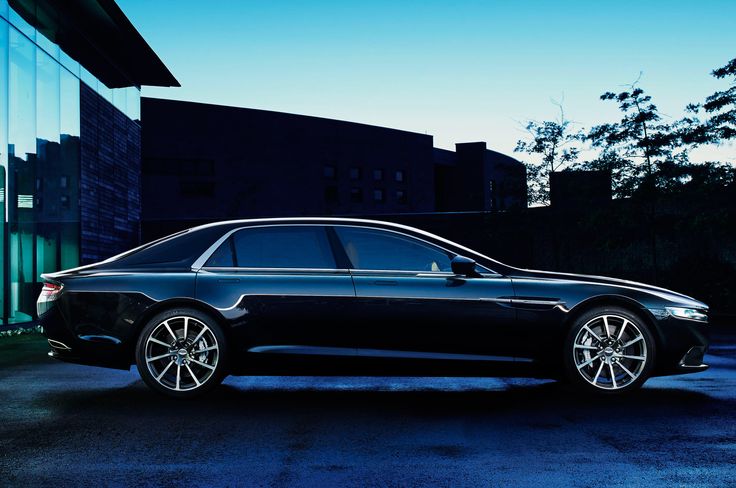By Covey Son
Star Tribune (Minneapolis)
WWR Article Summary (tl;dr) While Uber does offer luxury vehicles with its Uber black services, one Minneapolis entrepreneur hopes to tap into that luxury vehicle market with an app developed specifically for people who want to ride in style.
MINNEAPOLIS
When Jeff Lundquist took his first Uber ride, he was wary as the Honda pulled up.
It was unkempt and smelly. He spied a baby seat in the back. He had no idea whose car he was entering or how good the driver was.
But the convenience of calling a ride with just a few taps on the phone on the popular ride-hailing app appealed to him. That gave Lundquist an idea: Why not take the convenience of Uber to the luxurious and professional world of limousines?
So he made an app to do just that. Lundquist recruited two full-time programmers who developed the app for his web-based real estate company, Homegevity. He used his existing office space and his own money to fund the development phase. And in March, Call Limo was born.
Call Limo offers rides on demand from a fleet exclusively comprised of limos, town cars and high-end SUVs at a price similar to Uber. It hopes to carve out a piece of a market largely dominated by Uber and spread its foothold beyond the Twin Cities.
Lundquist said he’s expecting the first outside investment in the app to scale the operation.
“We’re taking people who are already going out, that are used to Uber, and giving them the ability to have luxury for not much more,” Lundquist said.
Like Uber, Call Limo riders can place a pin on the map where they want to be picked up. The app uses Google Maps for drivers to find customers and avoid traffic-heavy streets. Customers are charged by the minute, not by distance. And unlike Uber, riders are free of a “surge charge” in busy areas.
Uber already offers a similar luxury ride service through Uber Black, but Call Limo seeks to distinguish itself by only taking on commercially licensed limo drivers. At the core of Lundquist’s plan is selling the experience of being chauffeured by a professional with fewer hassles.
“The old standards of renting a limo was I need to call ahead and rent for a minimum of two hours,” Lundquist said. “I’m trying to break that mold.”
Right now, the biggest challenge is raising awareness for the app. So far, Call Limo has relied on word-of-mouth and web-based marketing. Lundquist tracks eventgoers via Facebook’s Graph API, which allows developers to tap data from the social network and market directly to potential customers. For example, if someone clicks “Going” on a Facebook event page for the “Lion King” musical, Lundquist can post a customized message in the person’s newsfeed soliciting a limo ride to the event.
Call Limo also uses search engine optimization to snag web traffic. Lundquist said he designed 150 websites for 150 airports around the country. Through SEO, these websites pop up toward the top of search results, Lundquist said, and each website redirects to Call Limo’s website.
Call Limo currently has 30 independent limo drivers and limo companies. Its selection ranges from eight- to 15-seat limos, Lincoln Town Cars to GMC Denalis. Lundquist recruited many of the drivers himself, and others joined after hearing about the app through other drivers.
Using apps like Call Limo and Uber Black looks to be a good way for limo drivers to make money while waiting for reservations to trickle in, said Noam Kaufmann, owner of One Great Limousine Service in Minneapolis.
So far, the payoff is short of revolutionary. Kaufmann, who has been using Call Limo since the launch, said rides from app only make up about 5 percent of his business.
Patrick Grose, owner of Preferred Limousine, said he’s gotten one ride through Call Limo in the month his company has used the app. Still, they sense potential in the app and plan to stick around.
“It’s still a brand-new company, and I don’t think people really know about it yet,” said Grose, whose company has six drivers and five cars. “Right now, Uber is the only thing people know that gives that instant gratification. Hopefully with more advertising, the word will get out that there is an alternative to Uber.”
Call Limo currently gets around 25 rides a day and Lundquist aims to boost that number to 100 by the end of the year. Call Limo takes home 25 percent of each fare picked up through the app, which averages around $20 to $40, Lundquist said. He said the fares are more expensive because limo riders tend to make longer trips than Uber riders. Lundquist said Call Limo is profitable thanks to minimal overhead.
While new to Minneapolis, Uber spinoffs like Call Limo are on the rise across the country. HopSkipDrive of Los Angeles caters to minors, who can’t get a ride alone through Uber. LA’s See Jane Go and Safeher in Boston offer rides by women drivers for women who feel unsafe getting in the car of an unknown man.
For now the gap in the market remains wide, and Lundquist is confident there are enough Uber riders yearning a more professional service for his app to take off.
“There’s always going to be something to be said about not knowing who you’re getting in the car with when you go with Uber,” Lundquist said.














































































































































































































































































































































































